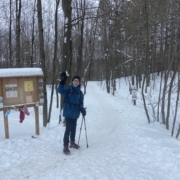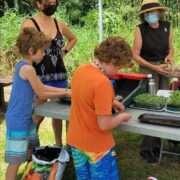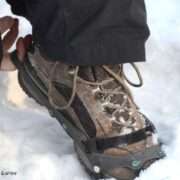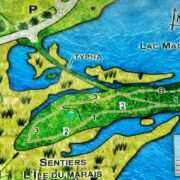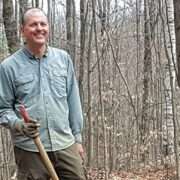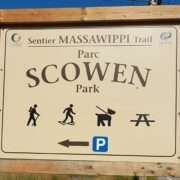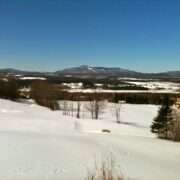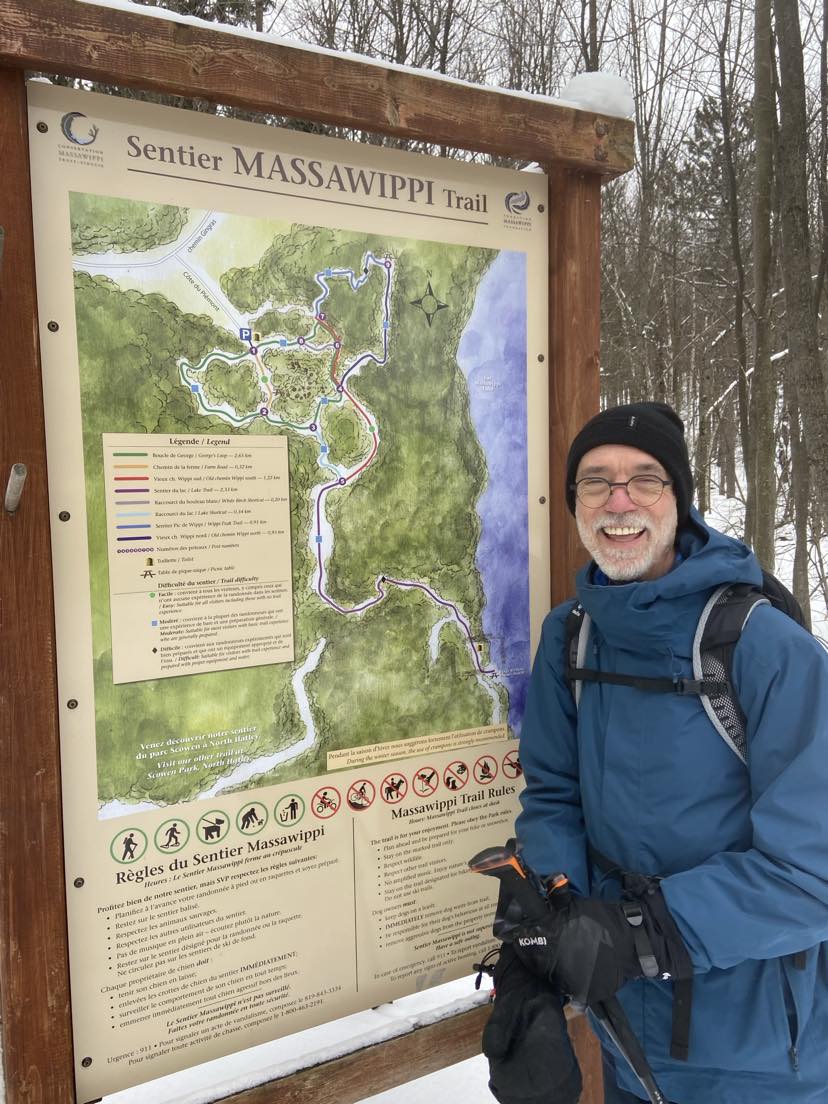
How did you find out about the Sentier Massawippi trails, even though you are not from the Eastern Townships?
A friend of mine, a resident of North Hatley, introduced me to the Sentier Massawippi and Scowen trails.
She and I are both active people, and we have been going regularly, about twice a week, for a little over two years now, on one trail or the other.
In addition to offering a calm environment with its forest, mature trees, streams, birds and deer, the trails are safe, well-maintained and the Sentier Massawippi offers us as well, access to the Lake.
Moreover, as an added bonus, it is always a pleasure to cross paths with other hikers and salute them on the way.
Last fall, my hikes in these exceptional natural sites sparked the idea of undertaking a long-distance adventure.
After a bit of research on the Internet, and because of its reputation as one of the most difficult but also most magnificent hikes in Europe, my choice was made….the GR20 in the mountains of Corsica!
And yes, with its total length of 180 km length and its 11,000 metres of positive vertical drop, you mustn’t be afraid of a challenge to tackle this great hike, especially if you are a 70-year-old! For me, it’s now or never!
With 15 refuges along the way, 15 days is the standard time to complete the hike. The more athletic hikers will do it in less than 10 days, which is not my case, wisdom, prudence and humility being my motto for this great adventure!
I am planning to start at the beginning of May, but the refuges don’t offer accommodation, catering, repair services, tent rental, etc. until May 22. Traffic and hot summer temperatures are the reasons for my choice of early May. So l will have to carry everything I need in my backpack to enable me to sleep as soundly as possible and to have the food I need to give me the energy required to successfully meet this challenge. I’ll spare you the long list, which amounts to a payload of around 25 kg.
So, to get back to the Sentier Massawippi trails, they naturally become a perfect training site. With a potential vertical drop of over 400m and a possible distance of around 10km, hiking the trails is an excellent workout that can be enhanced by adding weight to your backpack.
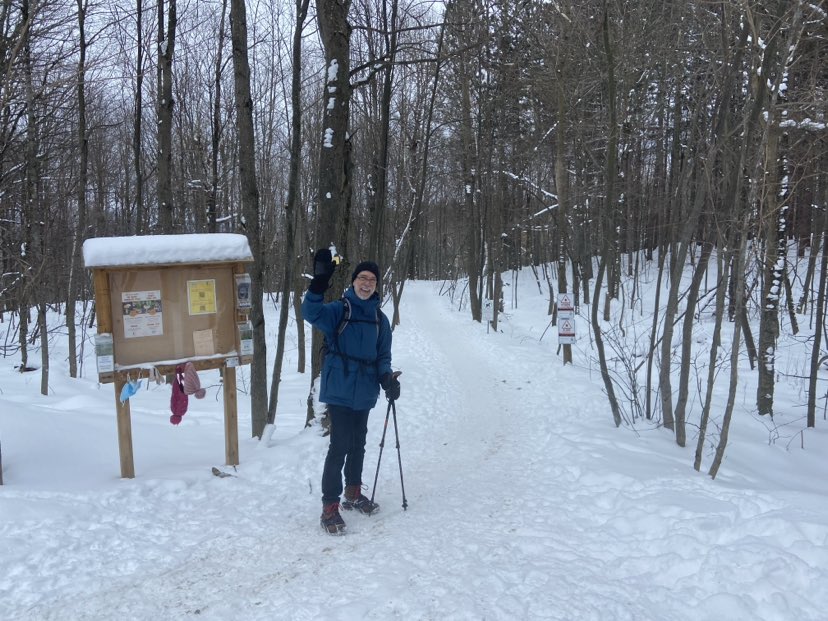 This physical exercise also enables me to test the hiking equipment that I will be using in Corsica: hiking boots and socks, crampons (there will be snow and ice in the mountains in May), hiking poles and backpack. Between now and my departure, I plan to hike other trails such as Mont Chauve via David Creek, 12.7km and 550m ascent, Mont St-Hilaire closer to home, 12.7km and 537m ascent, and Mount Mansfield in Vermont with its 12.4km and 880m ascent.
This physical exercise also enables me to test the hiking equipment that I will be using in Corsica: hiking boots and socks, crampons (there will be snow and ice in the mountains in May), hiking poles and backpack. Between now and my departure, I plan to hike other trails such as Mont Chauve via David Creek, 12.7km and 550m ascent, Mont St-Hilaire closer to home, 12.7km and 537m ascent, and Mount Mansfield in Vermont with its 12.4km and 880m ascent.
I am aiming to be ready by mid-April in terms of my training. This allows for a week’s rest and time for final preparations before departure, as my flight is scheduled for April 27.
And then, off we go for a great adventure!!

